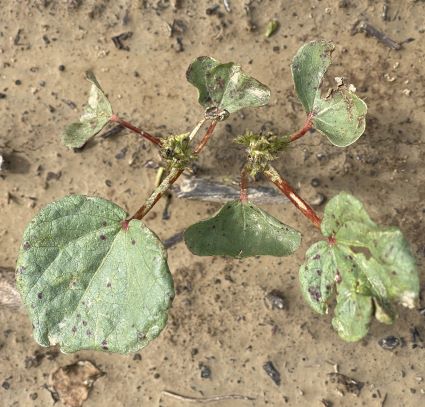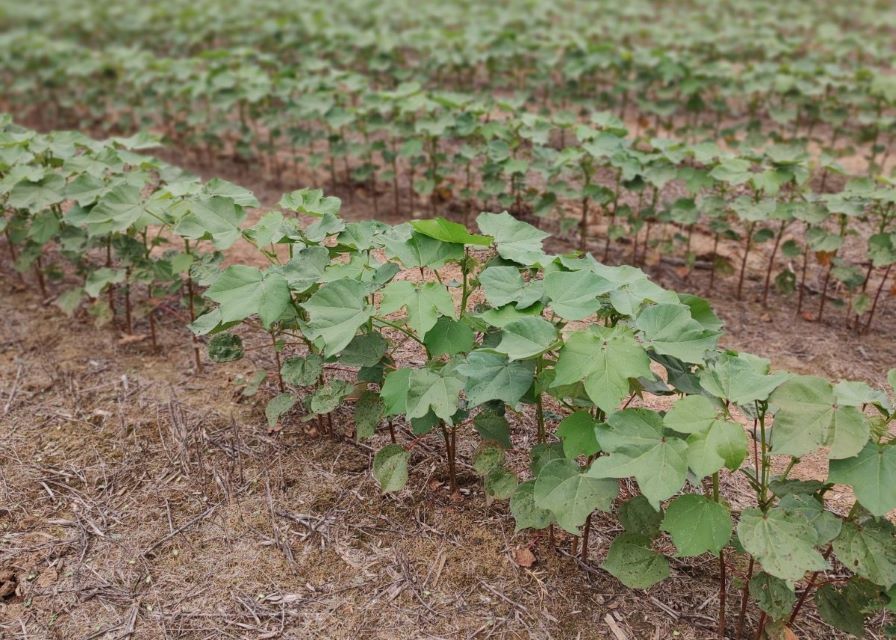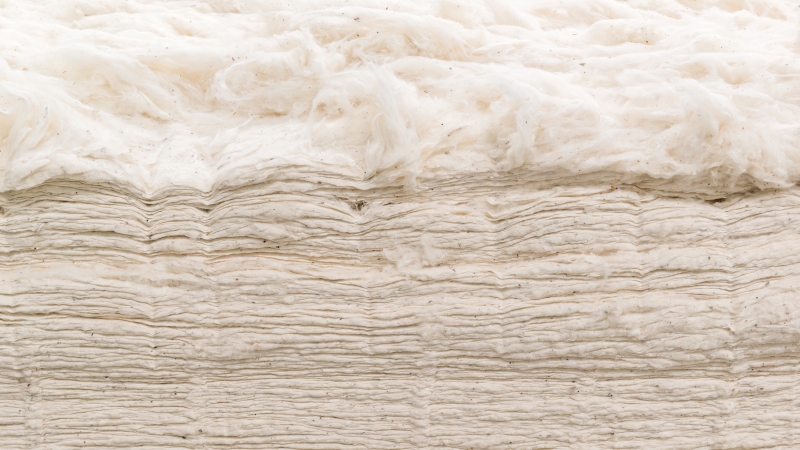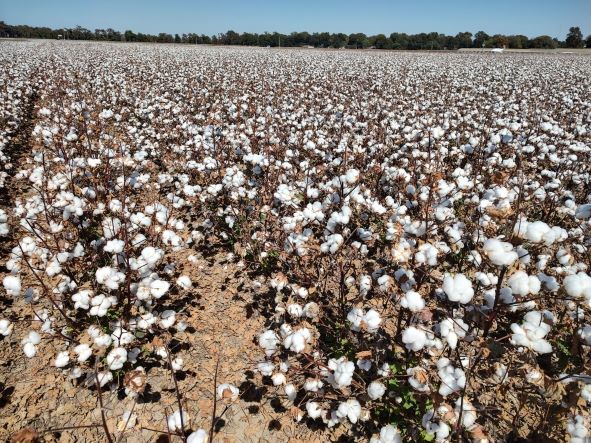Arkansas Cotton Hoping to Outrun High Thrips Populations
Thrips populations are high in Arkansas cotton. And with limited control options available, it’s important growers make the most of each insecticide application and be prepared for reinfestation.
Thrips are small insects that feed on the tender foliage of cotton and typically are only a worry early in the season. However, because of the damage thrips can do to young cotton plants and the recent heavy pressure across the state, it’s important to keep an eye out and treat at economic threshold, a research-based density of insects that will cause yield loss greater than the cost of applying an insecticide.
“Threshold really depends on what your cotton looks like,” says Ben Thrash, Extension Entomologist for the University of Arkansas System Division of Agriculture. “Threshold ranges from two to five thrips per plant. If your plants are stressed, you’re going to want to treat around two thrips per plant. But if your plants are growing well or if they are larger, you can go with the higher end of that threshold. With cooler weather in the forecast, many fields won’t be able to outrun that damage.”
Photo: U of A System Division of Agriculture
Choosing an effective insecticide for thrips can be tricky, with few options available and reinfestation likely in areas with heavy pressure.
“From what we’ve seen, acephate isn’t doing too hot. Bidrin is doing OK, but there is some resistance out there, so it won’t work as well as it used to,” Thrash says. “Intrepid Edge is really our go-to for thrips, but the residual control provided is very short. So, you’ll kill what’s out there, but you can get a lot of thrips adults that fly into the field after a spray, or if there are a lot of thrips eggs that are laid in the plant, they hatch out after an application and then you’re right back where you were before the application.
“Also, if you are planting a ThryvOn cotton cultivar, we do not recommend treating for thrips.”
ThryvOn cotton plants include biotechnology that offers thrips resistance.
With this in mind, growers can make the most of their insecticide applications by choosing the correct nozzles and adding appropriate wetting agents.
“We need to be sure we’re not using coarse nozzles like you would when you’re spraying many herbicides,” Thrash says. “We also need to remember to put a non-ionic surfactant with that product if you aren’t running it with Liberty or Roundup.”
The good news is thrips aren’t a concern for long.
“With the insecticide application, you’re trying to give that cotton some breathing room, just giving it a few days to grow a new leaf and grow out of that injury,” Thrash says. “Once you get to fourth true leaf, thrips are likely not the cause of your problems.”
Insecticide recommendations for cotton in Arkansas can be found online.










